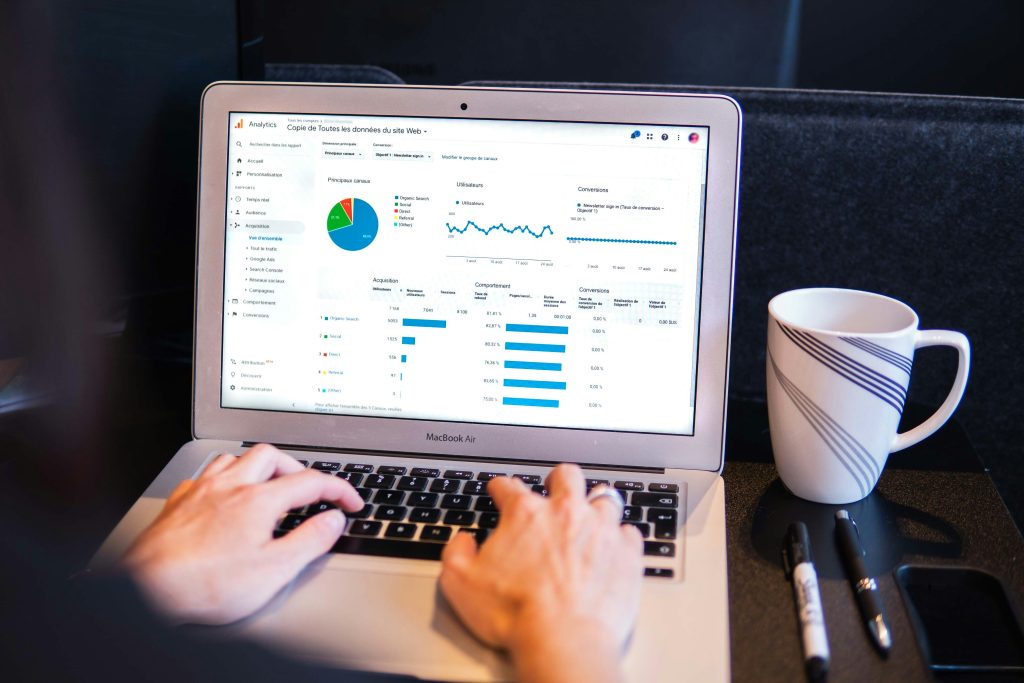In 2025, optimizing your digital presence is no longer optional. To thrive online, businesses must blend constant innovation with proven strategies. Website performance SEO tips are fundamental to making this happen, offering a roadmap to faster, smarter, and more visible digital experiences. Whether you’re a home service firm, a healthcare provider, or a legal office, an effective website isn’t just about looks — it’s about performance, engagement, and getting results. Let’s explore expert strategies that will elevate your site, streamline your user flow, and keep search engines and visitors coming back.
Why Website Performance SEO Tips Matter in 2025
With over 5 billion daily users engaging across the web, performance optimization isn’t just about speed. Google’s algorithm prioritizes websites that load fast, offer genuine user interaction, and are optimized for mobile and accessibility. That’s why Liveforce provides a scalable, conversion-driven approach that focuses on true engagement rather than chatbot automation. Real-time lead routing and human interaction help brands build trust faster and more effectively than ever before.
Fast-Loading Pages: The Heartbeat of SEO
The beating heart of strong SEO is now load speed. Time is short, and attention spans are shorter. Google’s Core Web Vitals place speed, interactivity, and visual stability at the center of ranking performance. Pages that load slowly rank lower, lose leads, and hurt conversion rates. Here are the best ways to speed up your site:
- Compress HTML, CSS, and JavaScript: Avoid render-blocking code and defer non-essential scripts.
- Use next-gen image formats: WebP and AVIF help reduce size without sacrificing quality.
- Use a Content Delivery Network (CDN): CDNs distribute your content globally to reduce access times.
- Enable browser caching: Store elements locally so visitors can load your site faster on repeat visits.
Mobile-First Indexing and Responsive Design
Since mobile-first indexing is now default, your design must meet that trend. Responsive layout is not just a feature — it’s a requirement. With over 60% of searches made on mobile devices, websites that fail to load or display correctly on phones are essentially invisible online.
Using platforms like Liveforce’s lead engagement tools, you can create mobile-optimized appointment forms and real human chat engagement tailored to mobile behavior.
Website Performance SEO Tips to Optimize User Experience
Designing with user experience in mind sends positive signals to both users and search engines. Smooth navigation, intuitive layout, and clear CTAs are conversion game-changers. Here’s how to elevate your UX and dominate SERPs:
- Guide users with predictable navigation like sticky headers and dynamic menus.
- Use contrasting CTA buttons that draw attention and direct flow (e.g., “Book Now,” “Speak with a Rep”).
- Limit the use of popups that interrupt user flow. Use behavioral triggers instead.
Interactive Content: Keep Users Engaged
Search engines reward time-on-site. So it’s not enough to just bring users in — you must keep them engaged. By embedding video content, infographics, or interactive tools like ROI calculators, you reduce bounce rate and increase session time. Consider these tactics:
- Live chat powered by real humans: Platforms like Liveforce eliminate automated responses for real interaction, increasing the likelihood of conversions.
- Dynamic forms: Conditional forms that respond to user selection can boost completion rates by up to 70%.
Speed and Security: Twins of Success in Website Performance SEO Tips
Speed and security now go hand-in-hand. Google considers secure sites (HTTPS) a ranking factor. Plus, having fast yet secure browsing boosts trust and lowers bounce rates. Here’s what to apply:
- Ensure your SSL is active and validated.
- Conduct daily scans for malware or injects using tools like Sucuri or SiteLock (source).
- Pair TLS 1.3 with HTTP/2 to gain encryption and speed in one move.
Internal Linking Strategy: Use Smart Structure for SEO Gains
An internal linking strategy improves crawlability, distributes link equity across pages, and offers clear hierarchy. For example, if you’re a service business, ensure that your homepage connects fluidly to each of your verticals. A plumbing firm should easily link between:
Creating a topical cluster of interlinked pages strengthens your domain in the eyes of crawlers.
Optimized Meta Titles and Schema for Website Performance SEO Tips
Meta information is the doorway to organic clicks. Because the SERP listing is often the first interaction with your brand, it must convey clarity and authority.
- Title Tag: Use concise, descriptive language, including your focus keyphrase (“Website Performance SEO Tips”).
- Meta Description: Keep it under 155 characters and make it click-worthy. Ref: “Boost your brand with expert website performance SEO tips that improve visibility, speed, and engagement.”
- Schema Markup: Enrich snippets with star ratings, service types, or questions to maximize CTR.
Structured Data and Priority Indexing
Beyond meta, structured data empowers your listings. Implement schema for:
- Local businesses (services + area)
- FAQs and How-Tos
- Reviews and aggregate ratings
Local SEO: High-Intent Traffic That Converts
For home service providers, physicians, or legal practices, location-based queries convert exceptionally well. Optimize local SEO by:
- Claiming, verifying, and optimizing Google Business Profiles
- Embedding Maps and directions on Contact pages
- Consistent NAP (Name, Address, Phone Number) data across all directories like Yelp, Angie’s List, etc.
- Integrating hyperlocal keywords and city pages such as “plumbing in Salt Lake City” or “divorce lawyer in Miami”
Voice Search and Zero-Click Optimization
More than 40% of adults use voice search daily. Tailoring your content for conversational queries gives you an edge. Focus on FAQs and long-tail, natural language phrasing. Zero-click results — such as featured snippets — also provide quick answers to direct intent queries.
Content Depth and Authority: Align with Website Performance SEO Tips
Google’s Helpful Content System rewards sites that go deep, not shallow. Update old content, expand with industry statistics, and add case studies. Articles must answer the “what,” “why,” and “how” comprehensively.
- Include industry updates, laws, timelines, and expert takes
- Add rich media for context like infographics or vlog snippets
- Use in-depth service guides or page FAQs like Liveforce does across its industry verticals
Putting It All Together with Liveforce
Websites that deliver results in 2025 come from a marriage of speed, structure, local relevance, and authentic engagement. That’s where Liveforce steps in. As a leader in human-powered lead generation, it offers the tools, integrations, and analytics dialed in for ROI.
If you’re looking for exact-fit strategies to grow your legal firm, health clinic, or service-based business, check out industry-specific pages like garage door repair or personal injury law. These sections are built with SEO and sales in mind.
Ready to Act? Let’s Talk Performance
Now that you’ve seen what works, it’s time to apply these website performance SEO tips where they count. Whether you’re cleaning up local service pages or building a long-form blog strategy, consistency and technical finesse will yield better rankings and stronger leads. For those who want to outpace competitors with real-time lead response and dedicated agent integration, Liveforce’s engagement platform gives you the leverage to get there faster.
In 2025, it’s all about fluid automation empowered by human connection. Let performance be your unfair advantage.


